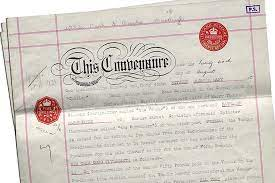Equity is the legal term for the percentage of the property somebody owns. Where a property is co-owned, it refers to the proportion of the property that each person owns. There are two reasons to transfer equity: to add somebody to the deeds of the property, such as after marriage when a spouse is added to the legal title, or to remove someone from the deeds, such as in the event of a divorce.
How is a transfer of equity carried out?
A transfer of equity solicitor, who can be found through a concierge service such as Sam Conveyancing, will carry out a four-step process to update the title deeds of the property with HM Land Registry. Everybody who is involved in the process must be in agreement as to what they wish to achieve and sign an ID1 form to confirm who is being removed from or added to the deeds. This will be witnessed by the chosen solicitor.
Step 1 – Agree the financial position.
The person being removed from the title deeds has to agree the percentage share the new owner will have in the property and the price they will pay for it. The person being added to the title deeds will need to gain consent from their existing mortgage lender or seek a new mortgage offer to pay for their extra equity. If any freeholder notice period exists, the person being removed from the deeds will need to settle any outstanding service charges or ground rent.

Step 2 – Solicitor to complete all necessary documentation.
The solicitor will prepare the transfer documents required for the equity transfer and notify any interested third parties about the change in ownership. Both the person leaving the deeds and the person joining them will need to sign to confirm the transfer.
Step 3 – Completion.
The solicitor will issue a financial statement ahead of completion that will outline all the legal fees and disbursements due. At the point of completion, any money that has to transfer between the parties will be processed to purchase the equity.
Step 4 – Update HM Land Registry.
The solicitor will update the title deeds for the property with HM Land Registry to confirm the change in ownership. They will also file a stamp duty land tax (SDLT) form.

Cost and timescale of equity transfer
A simple equity transfer can cost as little as Ł450. A more complicated scenario whereby a mortgage is required, the property is leasehold or an agreement has not been reached prior to instructing a solicitor will incur greater charges; however, the cost is generally unlikely to exceed Ł1,000.
The solicitor will charge for identification checks for both parties, the HM Land Registry fees, the ID1 form verification fee, and any fees associated with changes to the mortgage or leasehold status. It is important to note that an equity transfer requiring a mortgage will be unable to proceed should the person being added to the title deeds be unable to secure a mortgage for their new percentage share of the property.
The process usually takes three to six weeks, assuming no delays are introduced due to a lack of lender consent, disputes between the parties, or outstanding fees on a leasehold property.
